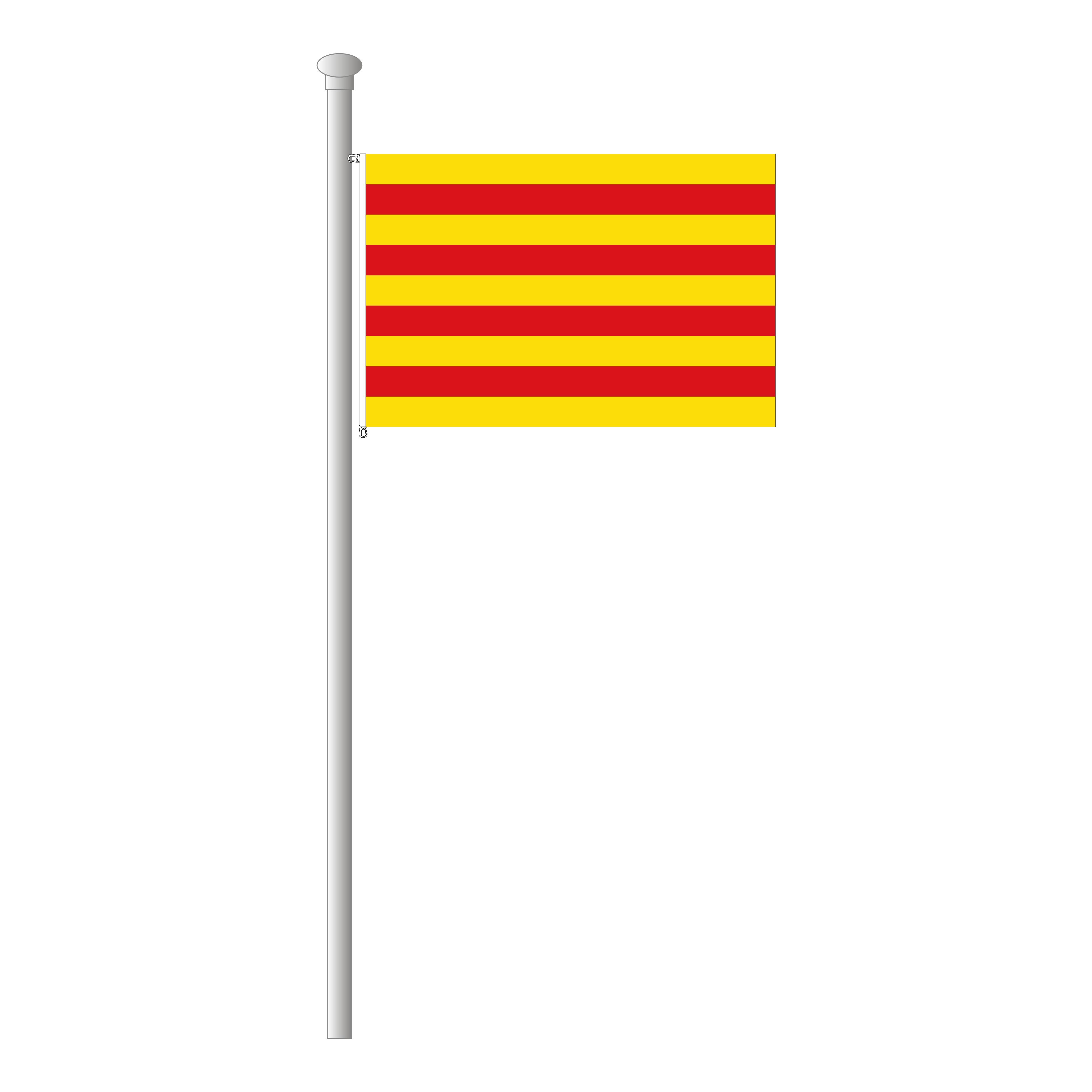Fahnen Kössinger, Jan., 2017
Symbols of the sky and courage inspiring during the battle - legends about the oldest flags of the world
Flags and banners are symbols that are thousands of years old and known since the time of the Romans. Also flags that are still used today have a long history to rememeber - telling stories of courage, battle, and faith.
For instance the "Dannebrog", the Danish national flag. Its place of birth is said to be Lyndanisse, today's Tallin in Estonia, its birthday June 15, 1219. During these times, a Danish army of the crusaders under the leadership of Waldemar II and the order of Pope Innocence III fought against the heathen Estonians. With reportedly 1500 longboats, the Danes reached Estonia and were able to first occupy the castle of Lyndanisse. But the Estonians managed a surprise attack, and the Danes were strewn into all directions. They were only able to turn the course of the skirmishes again in their own favor when the "Dannebrog" fell from the sky and lent new hope to the crusaders. For the truth of this story speaks the fact that a white cross on red was being used as a symbol by a whole row of Orders during the time of the crusades.The red color is said to be even older - the Vikings are said to have used red flags already.


From Austria, the "Dannebrog" got some competition. Here, the so-called "fess shield" is said to have originated during a battle. It is about the third crusade, and about the siege of Akkon in the north of Israel (1189 to 1191). The Babenberg Duke Leopold V took part, it is said, but not with great enthusiasm. After a battle, his white garment was soaked in blood, except for a white line, where he wore the sword belt. In 1191, Emperor Henry VI supposedly lent him the coat of arms which later became the Austrian national flag. As early as 1230 this legend was mentioned for the first time.
The truth is probably much less glamorous. The "bandage crest" likely goes back to the red and white red flag of the Carinthian family of the Eppensteiner, was handed down several times and finally ended up with the House of Babenberg.
The truth is probably much less glamorous. The "bandage crest" likely goes back to the red and white red flag of the Carinthian family of the Eppensteiner, was handed down several times and finally ended up with the House of Babenberg.
Still older the flags of Scotland and the Hispanic region of Catalonia are supposed to be - even if these are no national states. According to legend, an important battle and the sky also play a role in Scotland:
At a battle in the year 832, a King called Angus was surrounded by the enemy Anglo-Saxonians. He prayed for help. The next morning, the clouds formed a white cross in the blue sky, a so-called "Andrew's Cross" - the symbol for the National Saint of Scotland. That encouraged Angus' fighters, and he was able to defeat the Anglo-Saxonians. The flag, the "Saltire", did not appear until the end of the 13th century.
At a battle in the year 832, a King called Angus was surrounded by the enemy Anglo-Saxonians. He prayed for help. The next morning, the clouds formed a white cross in the blue sky, a so-called "Andrew's Cross" - the symbol for the National Saint of Scotland. That encouraged Angus' fighters, and he was able to defeat the Anglo-Saxonians. The flag, the "Saltire", did not appear until the end of the 13th century.


The Catalan "Senyera" is also said to date back to the 9th century, and here, as well, there is a first proof only centuries later. Legend has it that the Catalan count Guifre el Pilos was mortally wounded in a fight against the Normans. On his deathbed, he asked the Frankonian King Carles el Kalb for a coat of arms. The king, according to the request, dipped four of his fingers into the Count's wound, and, with the blood, drew the coat of arms on a golden shield. This story cannot be true - the king died about twenty years before the count, and here, too, reality is more profane. Presumably, Guifre el Pilos simply chose the city colors of Barcelona with his seizure of power there.

 English
English  Deutsch
Deutsch